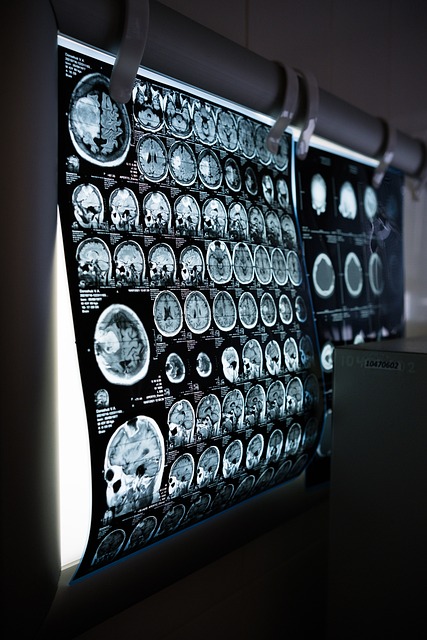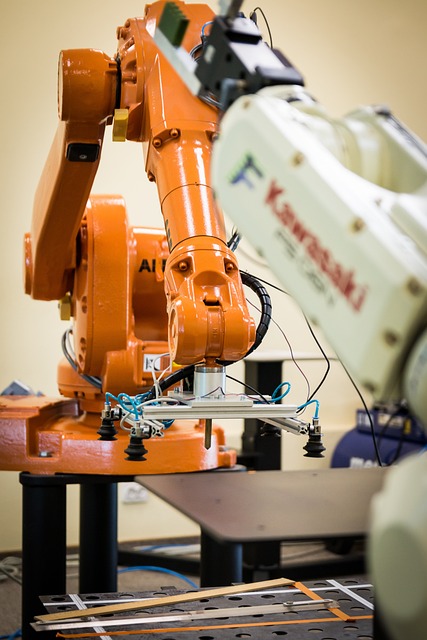
Neural network AI applications are diverse. The ability of artificial intelligence to analyze vast amounts of data in a short period of time is a major advantage for decision-making, forecasting, and pattern identification. In healthcare, AI is used for developing new drugs, imaging, and diagnosis. It helps doctors in cancer detection, predicting the risk of diseases, and monitoring patients’ vital signs. Financial institutions, on the other hand, use AI to detect fraud, assess credit risks, and make investment decisions.
In education, AI is used in adaptive learning, personalized tutoring, and producing educational content. It can analyze the performance of students, identify the gaps in a learner’s knowledge, and provide solutions accordingly. AI is now being used in the field of customer service as well. Chatbots are taking over interaction with customers, providing real-time support to their queries, and generating leads for the business. The potential of AI is limitless, and it’s exciting to see how it will revolutionize the way we live and work.
Computer Vision and Image Processing
Computer vision, a field that enables machines to interpret and understand visual information, has seen significant advancements through neural network AI applications. Neural networks have revolutionized image processing tasks, making it possible for machines to recognize patterns, objects, and even complex scenes.
Facial Recognition
Facial recognition is one of the most prominent neural network AI applications. It involves the identification and authentication of individuals based on their facial features.
- Security and Access Control: Neural networks are used in security systems to grant or deny access based on facial recognition, enhancing security in various environments.
- Smartphones and Devices: Many modern smartphones and devices use facial recognition for unlocking, providing a secure and convenient user experience.
Object Detection
Neural networks, especially Convolutional Neural Networks (CNNs), are employed in object detection, enabling machines to identify and locate specific objects within images or videos.
- Autonomous Vehicles: Object detection is crucial for self-driving cars to identify pedestrians, other vehicles, and obstacles on the road.
- Surveillance Systems: Security and surveillance systems use object detection to monitor and identify potential threats or intruders.
Image Classification
Image classification involves assigning labels or categories to images, and neural networks have made significant advancements in this area.
- Medical Imaging: Neural networks are used to classify medical images, aiding in the diagnosis of diseases like cancer or the detection of anomalies.
- Agriculture: In agriculture, image classification helps identify plant diseases, assess crop health, and optimize farming practices.
Medical Image Analysis

Neural networks are instrumental in analyzing complex medical images such as X-rays, MRIs, and CT scans.
- Disease Detection: They assist in the detection of various medical conditions, from identifying fractures to locating tumors in medical images.
- Radiology Assistance: Radiologists benefit from neural networks by receiving assistance in image analysis, which can lead to more accurate diagnoses.
Computer vision powered by neural networks continues to advance, opening up a wide array of neural network AI applications across industries, from healthcare to automotive to security. These applications not only enhance the efficiency and accuracy of visual data analysis but also contribute to the development of innovative solutions that benefit society as a whole.
Natural Language Processing (NLP) and Text Analysis
Natural Language Processing (NLP) and text analysis are areas where neural network AI applications have had a profound impact. Neural networks enable machines to understand, interpret, and generate human language, transforming the way we interact with text-based data.
Sentiment Analysis
Sentiment analysis, also known as opinion mining, is a key application of neural networks within NLP. It involves the assessment of text data to determine the sentiment or emotion expressed.
Social Media Monitoring: Neural networks are used to analyze social media posts and comments, providing valuable insights into public sentiment and customer feedback.
Customer Support: Sentiment analysis helps in identifying and prioritizing customer issues, ensuring timely responses and improved customer satisfaction.
Machine Translation
Machine translation is the process of translating text from one language to another, and neural networks have revolutionized this field.
Real-Time Translation: Neural networks power real-time language translation services, breaking down language barriers in communication.
Content Localization: Businesses use machine translation to adapt their content to a global audience, reaching a wider customer base.
Text Generation
Text generation is the process of creating human-like text using neural networks, particularly Recurrent Neural Networks (RNNs) and Transformer models.
Content Creation: Neural networks are employed in content generation tasks, such as generating product descriptions, news articles, and creative writing.
Chatbots and Virtual Assistants: Chatbots use neural networks to generate human-like responses in real-time, improving customer service and user engagement.

Named Entity Recognition
Named Entity Recognition (NER) is a crucial NLP task that involves identifying and classifying entities within text, such as names of people, places, and organizations.
Information Retrieval: NER is used to improve information retrieval systems, making it easier to find specific content within a large dataset.
Text Summarization: NER helps in generating concise and informative text summaries by identifying and highlighting key entities.
Speech Recognition and Synthesis
Speech recognition and synthesis are integral components of natural language processing, and the applications of neural networks in these domains have significantly improved the accuracy and efficiency of speech-related tasks. In this section, we will explore the applications of neural networks in both speech recognition and speech synthesis.
Speech Recognition
Speech recognition, often referred to as automatic speech recognition (ASR), is the technology that converts spoken language into written text. Neural networks play a central role in this process. Voice-activated virtual assistants like Siri, Google Assistant, and Alexa rely on neural networks for accurate speech recognition, enabling users to perform various tasks through voice commands. Neural networks are used in transcription services, making it possible to convert audio recordings into written transcripts for a wide range of applications, including interviews, meetings, and academic lectures.
Speech-to-Text Conversion
Speech-to-text conversion is a transformative application of neural networks, particularly deep learning models, for converting spoken language into text.

Speech-to-text technology benefits individuals with disabilities by providing real-time transcriptions, making content accessible to a wider audience. Search engines use neural networks to convert spoken queries into text, offering more accurate and efficient search results.
Virtual Assistants
Virtual assistants, such as chatbots and voice-activated systems, use neural networks to understand and respond to spoken language. Many businesses employ virtual assistants to handle customer inquiries and support, enhancing user experiences and automating routine tasks. Neural networks are integrated into smart home devices to understand voice commands, controlling lights, thermostats, and appliances.
Accent and Language Identification
Neural networks enable the identification of accents and languages in spoken communication. Language learning applications use neural networks to provide pronunciation feedback and assess language proficiency. Neural networks can identify regional dialects and accents, helping in applications like speech analytics and sociolinguistic research.
Speech Synthesis
Speech synthesis, also known as text-to-speech (TTS) technology, involves generating human-like speech from text input. Speech synthesis assists individuals with visual impairments by converting written content into spoken language. TTS technology is used in voiceovers for videos, audiobooks, and other multimedia content.
The applications of neural networks in speech recognition and synthesis have made a profound impact on communication, accessibility, and automation. These technologies have improved the way we interact with devices, making them more intuitive and responsive to spoken language, and have the potential to continue shaping the future of human-computer interaction.

Autonomous Systems and Robotics
Autonomous systems and robotics have undergone a revolution, thanks to the applications of neural networks. These networks enable machines to perceive and navigate the world, making autonomous actions and decision-making possible. In this section, we will explore how neural networks are applied in the development of autonomous systems and robotics.
Self-Driving Cars
Self-driving cars, or autonomous vehicles, are at the forefront of the applications of neural networks in the automotive industry. Neural networks, particularly Convolutional Neural Networks (CNNs), are used for recognizing road signs, pedestrians, and other vehicles. They help the car understand its environment, which is crucial for safe navigation. Recurrent Neural Networks (RNNs) and other models help in path planning and decision-making, ensuring that the vehicle can drive safely and efficiently.
Robot Control and Automation
Neural networks play a critical role in controlling robots and automating tasks in various industries. Robots in manufacturing plants use neural networks to identify defects, assemble products, and operate with precision. Autonomous robots are used in logistics and warehousing for tasks like picking and transporting goods. They use neural networks to navigate and interact with their environment.
Drone Navigation
Unmanned aerial vehicles (UAVs) or drones benefit from neural networks in navigation and surveillance. Drones use neural networks for obstacle detection and avoidance during flight. In agriculture, drones equipped with neural networks can assess crop health, detect irrigation needs, and optimize farming practices.
Healthcare Robotics
Robots are employed in healthcare settings to assist with tasks like surgery, patient care, and medication delivery. Neural networks play a role in enhancing the precision and safety of surgical procedures. In physical therapy and rehabilitation, robots with neural network-driven controls assist patients in regaining mobility.
The applications of neural networks in autonomous systems and robotics are not only transforming industries but also have the potential to enhance safety, efficiency, and accessibility. As these technologies continue to evolve, we can expect even greater advancements in the development of self-driving vehicles, intelligent robots, and other autonomous systems.
